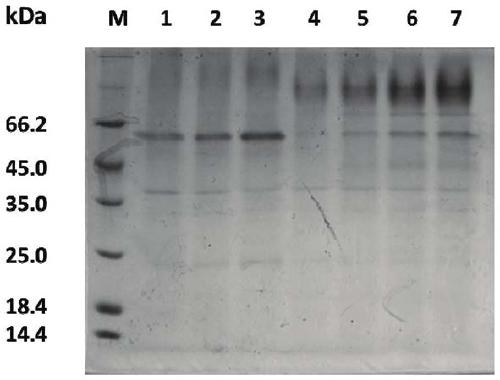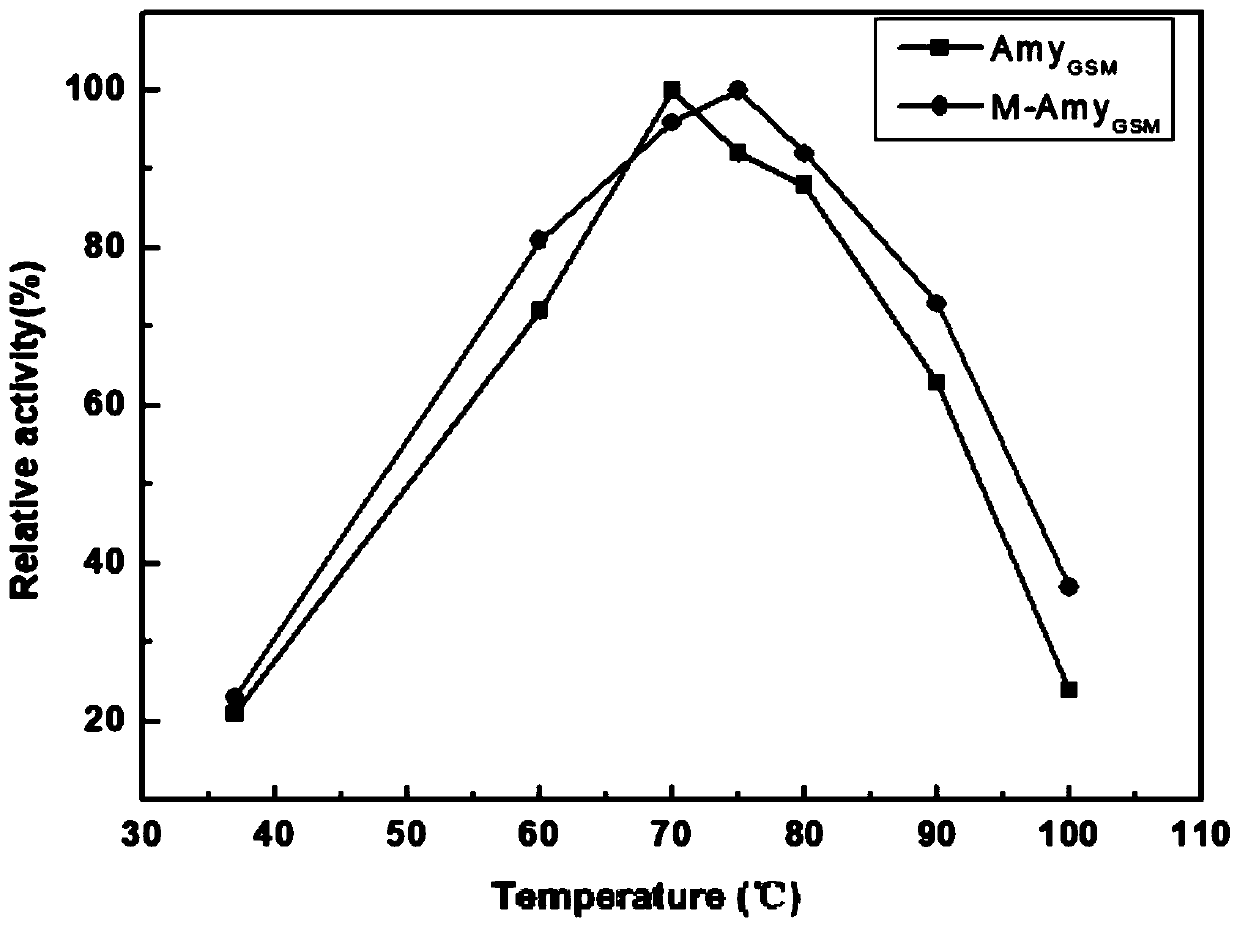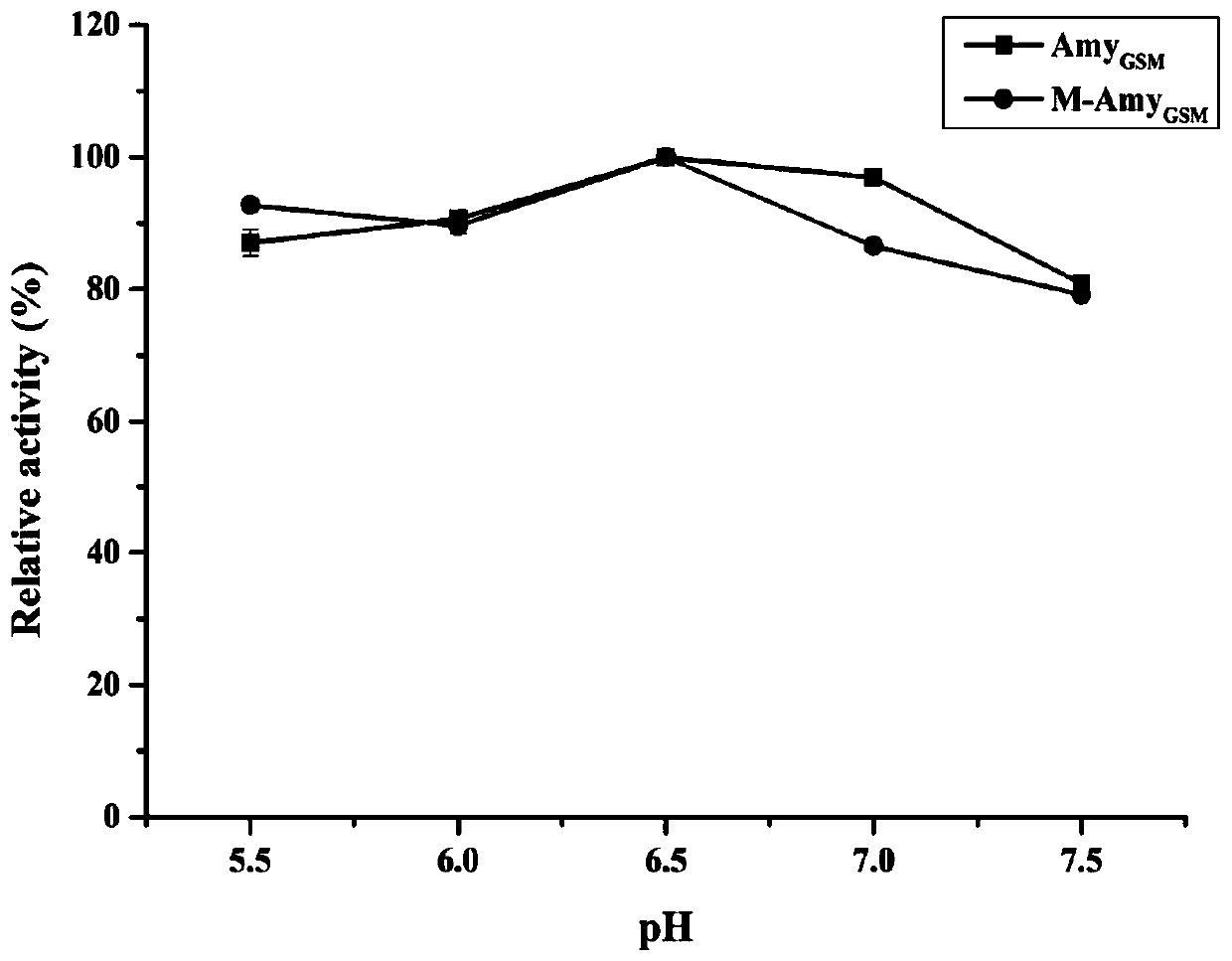Heat-resistant alpha-amylase from bacillus geobacillus stearothermophilus and application thereof
A technology of Geobacillus and thermophilic fat, which is applied in the field of biotechnology and food, can solve the problems of high production cost and low yield, and achieve high thermal stability and good thermal stability
- Summary
- Abstract
- Description
- Claims
- Application Information
AI Technical Summary
Problems solved by technology
Method used
Image
Examples
Embodiment 1
[0029] Amplification of the α-amylase gene
[0030] 1.1 Strains and their cultivation
[0031] The α-amylase gene of the present invention is cloned from Geobacillus stearothermophilus.
[0032] Geobacillus stearothermophilus (DSMZ456) of the present invention can be purchased directly from the German Culture Collection of Microorganisms, the strain number is DSMZ 456, and its original source is extracted from sugar beet juice in Austria. Therefore, the Geobacillus stearothermophilus described in the present invention can be obtained through commercial means, and can also be obtained through field collection or other means.
[0033] Glycerol bacteria were inoculated into No. 1 medium, cultured at 55°C for 2 days, and the bacteria were collected for genome extraction.
[0034] 1.2 Genome Extraction
[0035] Refer to the instructions of the Generay Bacterial Genomic DNA Rapid Extraction Kit.
[0036] 1.3 Amplification of the α-amylase gene from Geobacillus stearothermophilus...
Embodiment 2
[0044] Construction and expression of Pichia pastoris recombinant expression vector containing α-amylase
[0045] 2.1 Recombinant expression vector pPIC9K-amy GSM build
[0046] Escherichia coli DH5α host bacteria containing pPIC9K were extracted with AxyPrep Plasmid DNA Extraction Kit (refer to the instruction manual for the operation steps), single enzyme digestion was performed with Not I (purchased from Themo Company), the linear vector fragment was recovered by gel cutting, and then the linear vector fragment was recovered with ClonExpress Ultra One The Step Cloning Kit kit (refer to the instruction manual for the operation steps) was connected to the vector and the target gene (obtained in Example 1), transformed into Escherichia coli DH5α (purchased from Tiangen Biochemical Technology (Beijing) Co., Ltd.), PCR verified positive clones and sequenced, The comparison and analysis of the sequencing results on NCBI showed that the obtained α-amylase gene DNA consists of 165...
Embodiment 3
[0055] α-amylase activity assay
[0056] 3.1 Standard curve drawing
[0057] Take a clean test tube, label the test tube, prepare a glucose concentration gradient solution, add 0.2-1.4mL (at 0.2mL intervals) of 1% glucose solution to the test tube, and use the test tube without glucose as a blank control. Three parallel samples were made for each tube. Add ddH to the test tube respectively 2 O to a total volume of 2.0mL, then add 3mL DNS reagent to the test tube, boil for 15min, immediately add 10mL ddH 2 0 and pre-cooling, measure colorimetrically with a spectrophotometer at a wavelength of 540nm, and write down the optical density values of the samples corresponding to each test tube and calculate the average value, then draw the glucose standard curve.
[0058] 3.2 Determination of enzyme activity
[0059] The enzymatic activity of recombinant α-amylase was measured by DNS termination method.
[0060] reaction system:
[0061]
[0062] React in a water bath at 70...
PUM
 Login to View More
Login to View More Abstract
Description
Claims
Application Information
 Login to View More
Login to View More - R&D
- Intellectual Property
- Life Sciences
- Materials
- Tech Scout
- Unparalleled Data Quality
- Higher Quality Content
- 60% Fewer Hallucinations
Browse by: Latest US Patents, China's latest patents, Technical Efficacy Thesaurus, Application Domain, Technology Topic, Popular Technical Reports.
© 2025 PatSnap. All rights reserved.Legal|Privacy policy|Modern Slavery Act Transparency Statement|Sitemap|About US| Contact US: help@patsnap.com



